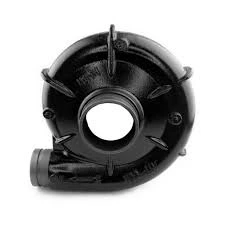Mobile:+86-311-808-126-83
Email:info@ydcastings.com
Downspout Cap Options for Effective Drainage System Management
Understanding Downpipe Caps Essential Insights for Homeowners
When it comes to home maintenance, many homeowners are often unaware of the importance of specific components that can significantly influence the functionality of their plumbing systems. One such component is the downpipe cap. This often-overlooked element plays a crucial role in managing rainwater flow and protecting your home from potential water-related damages.
What is a Downpipe Cap?
A downpipe cap is a fitting used at the top of a downpipe, which serves as an outlet for rainwater to flow from your guttering system into the drainage system. It provides a transition point between the gutter system and the downpipe, ensuring that rainwater is directed away from your home’s foundation, minimizing the risk of water pooling and potential structural damage.
Types of Downpipe Caps
Downpipe caps come in various designs and materials, each serving a specialty purpose. Common materials include
- Plastic Lightweight and cost-effective, plastic downpipe caps are resistant to corrosion and easy to install. However, they may not be as durable as metal counterparts in harsh weather conditions.
- Metal Aluminum or galvanized steel caps offer increased durability and longevity. They’re suitable for areas with extreme weather, providing robust protection against damage from ice or heat.
- Combination Some homeowners may opt for a combination of materials to balance cost and durability, depending on their local climate and specific needs.
Why are Downpipe Caps Important?
1. Prevent Water Damage One of the primary functions of downpipe caps is to prevent water from pooling around your home’s foundation. Without proper drainage, water can seep into the foundation, leading to cracks, mold, and other structural issues.
2. Pest Prevention Downpipe caps also act as a barrier against pests. Open downpipes can become habitats for insects and rodents. A cap helps to keep these pests out, maintaining a healthy living environment.
3. Debris Blockage Prevention A well-designed downpipe cap prevents leaves, twigs, and other debris from entering the downpipe. If these materials accumulate, they can cause blockages that lead to overflowing gutters and excessive water buildup.
down pipe caps

4. Aesthetic Appeal Beyond functionality, downpipe caps can enhance the visual aspect of your home’s exterior, contributing to the overall design and aesthetic appeal.
Installation Considerations
Installing downpipe caps may seem straightforward, but there are several factors to consider
- Proper Sizing Ensure that the cap fits your existing downpipe. An ill-fitting cap can create gaps that defeat its purpose.
- Vertical Alignment The cap must be installed vertically to facilitate proper water flow. Misalignment can lead to drainage issues.
- Material Choice Select a material that complements your home’s design while ensuring durability against environmental effects.
Maintenance Tips
Regular maintenance of downpipe caps can extend their life and improve functionality
- Inspection Regularly check your downpipe caps for damage, debris accumulation, and blockages.
- Cleaning Clean the caps as needed to remove debris and ensure unobstructed water flow.
- Replacement If you notice cracks, rust, or other signs of wear, it’s important to replace downpipe caps promptly to maintain effective drainage.
Conclusion
In conclusion, downpipe caps may seem like minor components in the grand scheme of home maintenance, but they play a vital role in protecting your property from water-related damages. By understanding their importance and ensuring proper installation and maintenance, homeowners can safeguard their homes from potential structural issues, pest infestations, and aesthetic problems. For those looking to improve their home’s drainage system, investing in quality downpipe caps is a step in the right direction. Whether you are replacing an old cap or installing a new one, these fixtures are an essential aspect of responsible homeownership.
-
Why Should You Invest in Superior Pump Castings for Your Equipment?NewsJun.09,2025
-
Unlock Performance Potential with Stainless Impellers and Aluminum End CapsNewsJun.09,2025
-
Revolutionize Your Machinery with Superior Cast Iron and Aluminum ComponentsNewsJun.09,2025
-
Revolutionize Fluid Dynamics with Premium Pump ComponentsNewsJun.09,2025
-
Optimizing Industrial Systems with Essential Valve ComponentsNewsJun.09,2025
-
Elevate Grid Efficiency with High-Precision Power CastingsNewsJun.09,2025











